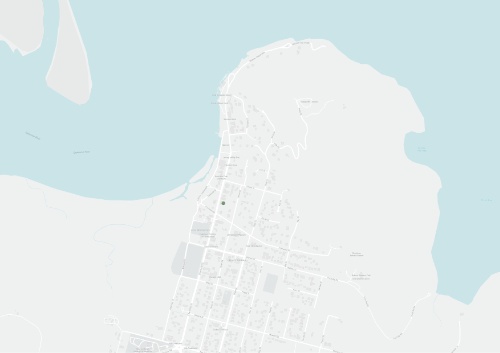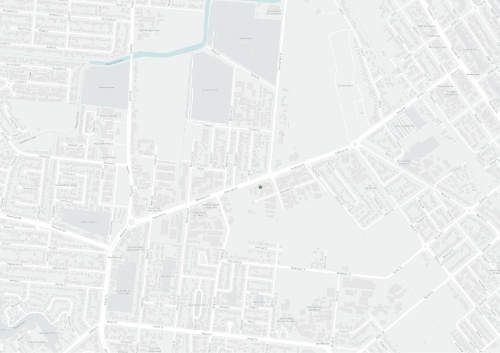Plan Explorer
Filter by:
Region
Topic
Sector
Other
Results
Wujal Wujal Aboriginal Shire Council planning scheme
Current CommunityThe Wujal Wujal planning scheme was released in 2013 by the Wujal Wujal Aboriginal Shire Council and set out the council's intention for the future of Wujal Wujal over the next 20 years from 2013.
Port of Weipa environmental management plan
Current StrategicThis environmental management plan was released by the North Queensland Bulk Ports Corporation as part of their environmental program with the objective of acting as a reference document for all then-current and potential users of the Weipa port.
Brumby Hollow Property Pest Management Plan
Obsolete OperationalThis plan outlines the sustainable land management practices for Brumby Hollow over 4 years. Objectives are:
Bunata Property Pest Management Plan
Obsolete OperationalThis plan aims to protect the economy and environment of Bunata from the adverse impacts of weeds and feral animals.The objectives for weed and feral animal management in Bunata over the next 4 years are:
Butchers Hill Station Pest Management Plan
Obsolete OperationalTo manage the land of Butchers Hill Station, in a sustainable way, by controlling weeds and pest animals on the property, and ensuring it’s economic and environmental viability continues into the future.
Threats to priority species of the Cape York Peninsula region
Current Government PolicyOn day one of the regional workshop, participants used their knowledge of individual species to identify the major and minor regional threats that are affecting each species. On day two of the regional workshop, species were grouped by major threats.
Cape York Peninsula Feral Pig Management Plan 2006-2009
Obsolete OperationalThe Cape York Peninsula (CYP) Pest Management Strategy provides a planning framework for coordinated pest management between research bodies, agencies, communities, industries, individuals and the government.
Queensland Pest Animal Strategies - Feral Pigs (Sus scrofa)
Obsolete Government PolicyThe overall vision of the feral pig management strategy is to use best practice
management to minimise the impact of feral pigs on the environment, economy and
health of Queensland.
The strategy is intended to achieve five outcomes:
Cape York Peninsula Pest Management Strategy
Obsolete StrategicThe Cape York Peninsula Pest Management Strategy (CYPPMS) is a broad over-arching document that establishes a Cape-wide planning framework for integrated pest management by government, community, industry and individuals.
Jim's Joint Property Pest Management Plan
Obsolete OperationalThe plan has been prepared to protect the economy and environment of “Jim’s Joint” from the adverse impacts of weeds and feral animals.
Julery Pastoral Property Pest Management Plan
Obsolete OperationalThe plan represents a workable pest management program which identifies, combats and eradicates declared environmental pest plants and feral animals for Julery Pastoral.
Maitland Downs Property Pest Management Plan
Current OperationalThis plan provides a sustainable land management program for Maitland Downs, to control weeds and pest animals on the property, to ensure it’s economic and environmental viability continues into the future.
Cape York Peninsula Pest Management Plan 2006 - 2011
Obsolete StrategicThe Cape York Peninsula Pest Management Plan (CYPPMP) establishes a Cape-wide planning framework for integrated pest management by Government, Community, Industry and Individuals.
Eastern Kuku Yalanji Indigenous Protected Area Management Plan Stage 2
Current CommunityJalunji-Warra Land and Sea Country
(excerpt)
Cape York Peninsula Regional Biosecurity Strategy
Current StrategicCape York Natural Resource Management (Cape York NRM), Cook Shire Council (CSC), Weipa Town Authority, Wujal Wujal, Hopevale, Lockhart, Mapoon, Napranum, Aurukun, Pormpuraaw and Kowanyama Aboriginal Shire Councils and the Northern Peninsula Area Regional Council (NPARC) have collaboratively devel
Recently added
Cape York Peninsula Land Use Strategy: Natural Resource Analysis Program: Environmental Regions of Cape York Peninsula
CYPLUSThe Environmental Resources Information Network (ERIN) was established as a program in the Commonwealth Environment Portfolio in 1989 to provide geographically related environmental inormation required for planning and decision making.
Aurukun waterways wetland and coastal draft management plan 2009 (draft)
StrategicThis draft plan was the product of a contract between Wik Projects and the Department of Natural Resources and Water, created on behalf of the Natural Heritage Trust. This report focuses predominately on the experiences and aspirations of Wik, Wik Way, and Kuugu people.
Laura Rangers weed and fire plan
Current CommunityThis poster outlines the objectives, location, strategy, planned outcomes, and implementation of the Laura Ranger's Weed Management Strategy.
Great Barrier Reef report card 2012 and 2013
Current InformationalThe Great Barrier Reef report card is part of the Reef Quality Water Protection Plan and measures the progress from 2009 to 2013 regarding the Reef Water Quality Protection plan 2009 targets.
Normanby Catchments water quality management plan - draft
StrategicThis is the final draft for the Normanby Catchment Water Quality Management Plan and was released for consultation and review on the 1st of September 2013.
Wujal Wujal Aboriginal Shire Council planning scheme
Current CommunityThe Wujal Wujal planning scheme was released in 2013 by the Wujal Wujal Aboriginal Shire Council and set out the council's intention for the future of Wujal Wujal over the next 20 years from 2013.
Mitchell River Watershed Management Group operation plan
Superceded OperationalThe Mitchell River Watershed Management Group released this operational plan as a follow up from the business plan to take tasks identified therein and prioritise them, identify potential partners for projects, and setting measurable outcomes and appropriate times for completion of projects.
Wujal Wujal Aboriginal Shire Council land management pest animals and weeds presentation
StrategicThis presentation was created by the Wujal Wujal shire council to present the main environmental impacts such as weeds, straying stock (wild horses/cattle), and disturbed areas in Wujal Wujal in an easy to understand format.
Weeds of national significance: Pond Apple
StrategicThe weeds of national significance project was an initiative of the Commonwealth Government and each individual State Government to work towards the control and eradication of weed species deemed to be of significant importance or that pose a significant risk to the environment.
Mungumby Community Plan
Current CommunityThis document was released in March of 2012 following a 2007 Federal Court ruling which recognised the Eastern Kuku Yalanji people's of 129,600ha of country between the South Mossman River and just North of Black Mountain near Cooktown.

